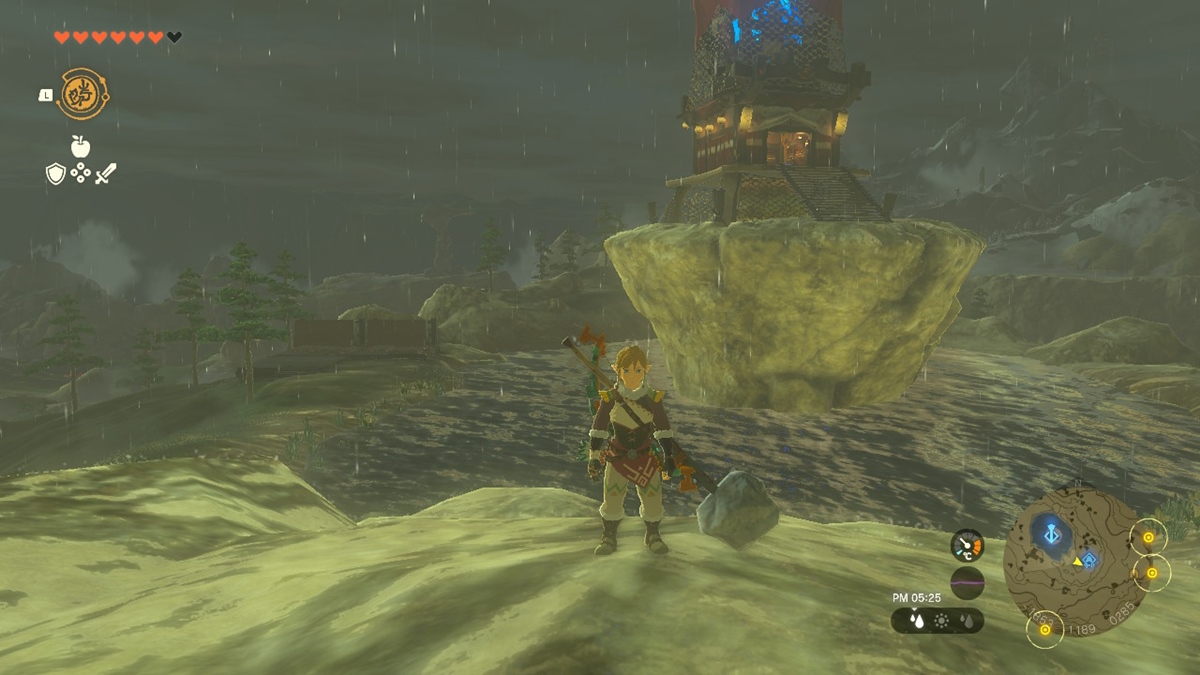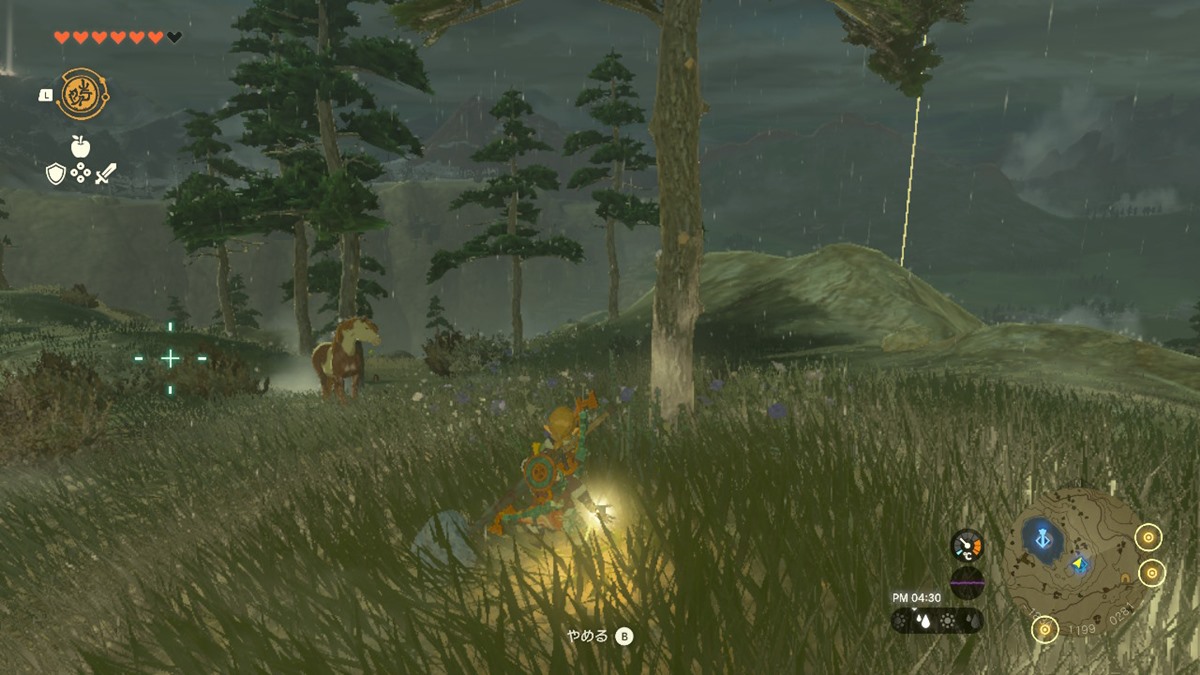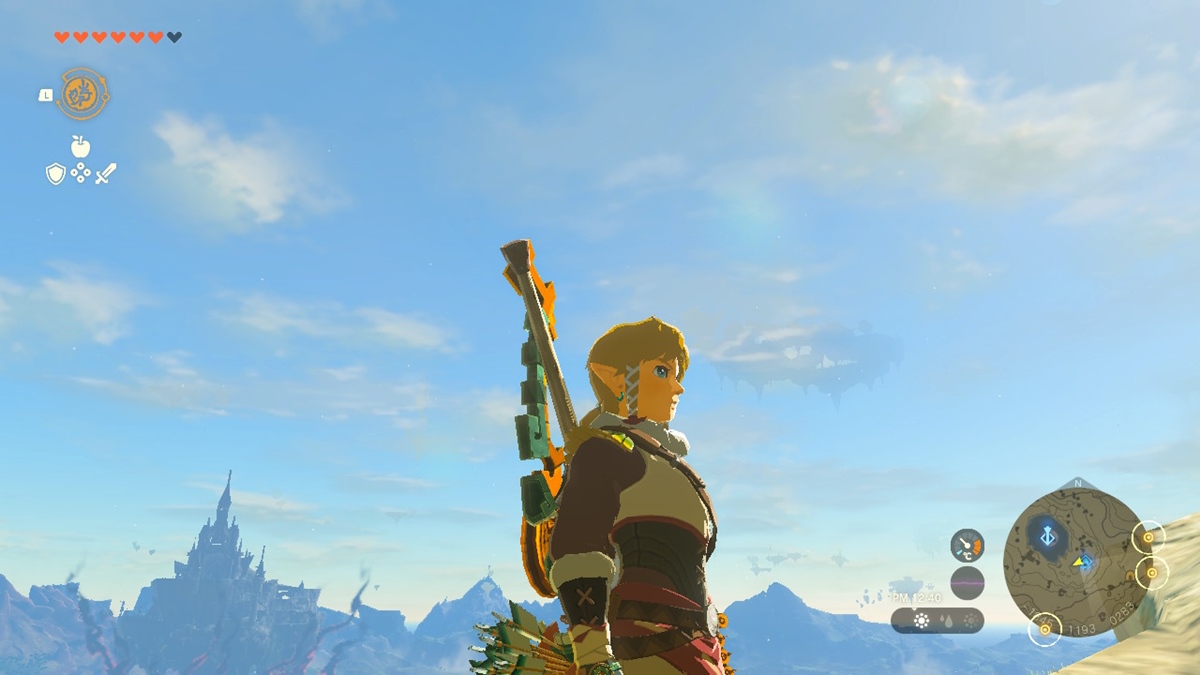Rain in The Legend of Zelda: Tears of the Kingdom has recently become a topic of discussion, as players have been sharing a variety of discoveries about its technical details. From meticulous details to those you’re liable to forget, there are many interesting facts about Hyrule’s rain.

Just like Breath of the Wild, Tears of the Kingdom also features weather elements. Things aren’t always clear and sunny, though, and there are times when you experience bad weather like rain or lightning. These changes in weather also have an effect on gameplay. Many players have likely encountered different examples of this, like how it becomes harder to climb up a cliff face when it’s wet, or how lighting a fire proves futile when it is immediately stamped out by a downpour.

Most find rain unpleasant due to the aforementioned negative effects, but in contrast, certain weapons become more powerful when they are wet, and lightning attacks get a boost, so rain has its benefits too. There are also many other hidden details regarding rain that many players either forget or don’t know about to begin with.
Most find rain unpleasant due to the aforementioned negative effects, but in contrast, certain weapons become more powerful when they are wet, and lightning attacks get a boost, so rain has its benefits too. There are also many other hidden details regarding rain that many players either forget or don’t know about to begin with.
For example, one aspect that became a hot topic among players on Reddit is how using
the Recall ability freezes the rain and even allows you to see the individual raindrops suspended in midair. If you move the camera around while time is frozen, you can see that the raindrops are all distributed in 3D space and positioned at different depths.
Rain can easily have a detrimental effect on a game’s performance if it is rendered in detail, with a large number of particles. As a result, many games often use simplified methods to depict rain. Things are even more elaborate in Tears of the Kingdom, as objects can become wet, and players can create structures of their own custom design, so there are a variety of different ways rain needs to interact with objects. Yet even though pulling all this off seems like it would be very complex, the developers still implemented a depiction of rain that appears realistic even when time is stopped. Such meticulous attention to detail is far from ordinary, and even in the above Reddit thread, you can see users admiring the rain and trying to work out just how they managed to pull it off.
I (the original author of this article) tried it out for myself, and while using Recall, the raindrops properly went around obstacles in a realistic manner without clipping through. What’s more, after examining my recorded gameplay footage, I confirmed that the raindrops you see when activating Recall are not newly rendered at that moment, but are, in fact, the droplets that are already in the air being literally stopped.
Another interesting tidbit is that the waterfalls on the Sky Islands lengthen when it is raining. The increased volume of water causes some to extend all the way down to The Surface. While this is a good example of the game’s attention to detail, it can also serve as a convenient route to quickly reach the Sky Islands, provided you use the abilities of certain equipment.

Another detail that may be overlooked is how grassy fields become more slippery when it rains. This reduces the friction while Shield Surfing and makes it easier to maintain your speed and acceleration. Based on my own tests, it also remarkably reduces the loss of speed when on dirt surfaces. Downed enemies and other objects also become slippery, making it easier to adopt tactics like sending them sliding off cliffs. There are also bugs that only appear when it is raining in addition to other details that shouldn’t be overlooked. It’s easy to harbor an aversion to rain, but if you pay attention to all the small changes that occur, then you may make some interesting discoveries.
Written by. Marco Farinaccia based on the original Japanese article (original article’s publication date: 2023-06-26 15:32 JST)





